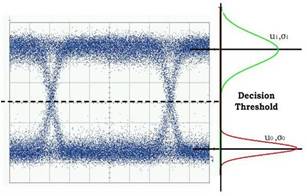Photonics and Communications Lab (OKT-Lab)
- Type: Laboratory
- Semester: Winter Term
-
Place:
NTI, Bldg. 30.10, OKT Lab 2.31
-
Time:
Wed 14:00-18:00
- Start: Online: after registration in CAS you'll receive an email with the necessary details.
-
Lecturer:
Prof. Koos, Prof. Randel, Prof. Dr. Freude and colleagues.
- SWS: 4
- Lv-No.: 2309490
-
Information:
To attend the Photonics and Communications Lab you need to sign up in the Campus Management System and send an email to Dr. Artem Kuzmin.
In case of questions, please contact Mr. Artem Kuzmin: artem.kuzmin@kit.edu
Registration for the lab in the Campus Management System ends on 26.04.2024.
Language:
English
Prerequisites:
- Lecture: OTR - Optical Transmitters and Receivers
- Basic knowledge in Matlab
Contents


Photonics and Communications (OKT):
- Experiment 1: Laser diodes
- Experiment 2: Photo detectors
- Experiment 3: Optical Coherence Tomography (OCT)
- Experiment 4: Back scattering in fibers (for trace analysis: OTDR Viewing Tool)
- Experiment 5: BPM simulation of integrated waveguides
- Experiment 6: Ring resonator filters
- Experiment 7: Simulation of an optical transmitter (-40 GBps)
- Experiment 8: Generation, Transmission and Reception of Digitally Modulated Signals
For KSOP students in the first two semesters, the following experiments are recommended:
- Experiment 1: Laser diodes
- Experiment 2: Photo detectors
- Experiment 4: Back scattering in fibers (for trace analysis: OTDR Viewing Tool)
- Experiment 6: Ring resonator filters
KSOP students with profund knowledge in optics, (typically from the third semester on), are encouraged to choose their experiments out of the entire set of eight.
Origin Template
Optical Coherence Tomography
Optical Coherence Tomography (OCT) is an imaging technique allowing for three-dimensional imaging with a spatial resolution on the scale of a few micrometres. Making use of an interferometric principle, it performs depth-resolved measurement of backscattered light inside the sample. Because of its high sensitivity OCT gained importance in various fields like ophthalmology, dermatology and material characterization.
In this experiment you will learn to acquire detailed measurement data with a free-space Swept-Source OCT-System and you will do the corresponding signal processing steps with Matlab.
Backscattering in Optical Fibers
This module gives an introduction to optical time domain reflectometry. This scheme monitors fiber optical links for changes in transmission quality or locations of damages to the fiber by evaluating backscattered signals. It is an important routine employed by all major telecommunication companies to check the integrity of optical links.
BPM-Simulations of Integrated Waveguides
High refractive index contrast waveguides are used in integrated optical devices. Typical single mode planar and stripe waveguides are designed and characterized by beam propagation simulations with an industrial-standard high-frequency design-suite. This gives a graphic understanding of the actual transmission of light as an electromagnetic wave, extension of optical fields and of what is meant by “optical mode”.
Ring Resonator Filters
Ring resonator waveguide structures are useful for adding or dropping information in networks switches. Their principle of operation is investigated with a microwave-frequency plug-and-play model (10 GHz).
Transmission and filtering properties are then experimentally verified with a network analyzer. Finally, finite-element-simulations are performed for visualization and a cross-check with theory.
Simulation of Optical Transmitters
In this module intensity- and phase-modulated 40 Gbit/s optical signals are generated, transmitted and received in a simulated environment (Rsoft OPTSIM).
Virtually all electrical and optical phenomena in communication networks can be simulated with this software. It is a valuable tool for cost-efficiently designing and testing new network components before actually employing them in real networks.
Generation, Transmission, and Reception of Digitally Modulated Signals
Quadrature Phase Shift Keying (QPSK), Quadrature Amplitude Modulation (QAM), or Orthogonal Frequency Division Multiplexing (OFDM) are important digital modulation formats used in radiofrequency (RF) applications, in radio-over-fiber (RoF) systems, and in optical communications systems.
In this module, digitally modulated signals are programmed in software, physically generated with an Arbitrary Waveform Generator (AWG; a fast digital to analog converter, DAC), recorded by a Digital Phosphor Oscilloscope (DPO; a fast analog to digital converter, ADC), and demodulated and evaluated in software. Strong emphasis of this experiment lies on the AWG and the DPO.









